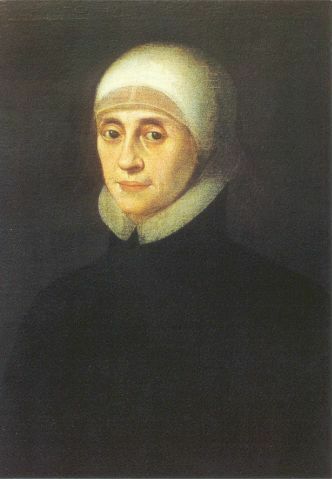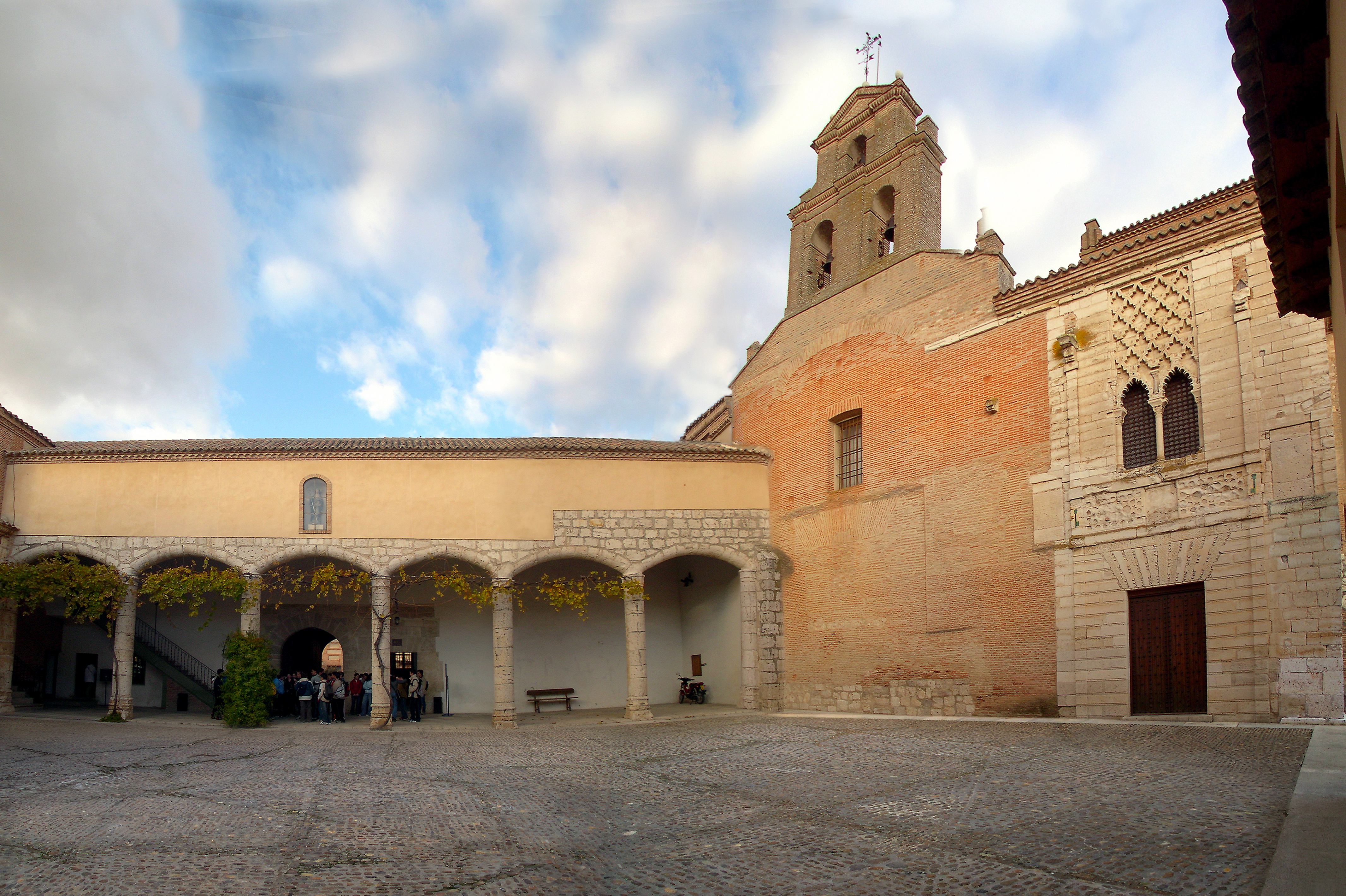|
St. Clare's Convent (other)
St. Clare's Convent, St. Clare's Priory, Poor Clare's Convent, Convent of Santa Clara, or other variations on the name, may refer to: Cuba * Convento de Santa Clara de Asis, Havana Denmark * St. Clare's Priory, Copenhagen France * Poor Clare Convent (Gravelines) Israel * Monastery St. Claire, Jerusalem * Monastery St. Claire, Nazareth Mexico * Poor Clare convent of Mexico City, now Library of the Congress of Mexico Peru * Convent of Santa Clara, Lima Portugal * Convent of Santa Clara, Vila do Conde Spain * Royal Convent of Santa Clara, Tordesillas * Convent of Santa Clara of Gandia Sweden * St. Clare's Priory, Stockholm United Kingdom * Convent of Poor Clares, Woodchester A former Convent of Poor Clares is located in Woodchester, near Stroud in Gloucestershire. The convent was home to nuns of the Poor Clares order from 1850 to 2011. The convent is based around a 17th-century house that was enlarged in the 1850s. ... United States * St. Clare's ... [...More Info...] [...Related Items...] OR: [Wikipedia] [Google] [Baidu] |
Convento De Santa Clara De Asis
The Convento de Santa Clara de Asis (Spanish for "Convent of Clare of Assisi, Santa Clara de Asis") is a convent in Havana, Cuba. Built in the 17th century, the convent has since been partially abandoned and converted into a storehouse. History The Convento de Santa Clara de Asis was built in Havana between 1638 and 1643. Built in the heart of Old Havana, the convent was close enough to the harbor to be used by sailors and inbound passengers to the colonial capital. Upon its opening, the convent became the first nunnery in Cuba. The convent continued to operate for several centuries, providing social and religious services. Many unmarried women from Colonial Cuba's well-to-do classes were enrolled in the nunnery by their families. By the turn of the 20th century, the increasingly modernized city of Havana was becoming a disruptive location for the nuns of the convent, and in 1921 the nuns were relocated to Lawton and the government was given ownership of the site. In the decade t ... [...More Info...] [...Related Items...] OR: [Wikipedia] [Google] [Baidu] |
Poor Clare Convent (Gravelines)
The Convent of Poor Clares at Gravelines in the Spanish Netherlands, now northern France, was a community of English nuns of the Order of St. Clare, commonly called "Poor Clares", which was founded in 1607 by Mary Ward. The order of Poor Clares was founded in 1212 by Saint Clare of Assisi as the Second Order of the Franciscan movement. It is an enclosed religious order which follows an austere lifestyle. After the Reformation and its consequence, the Dissolution of the Monasteries between 1536 and 1541 by Henry VIII, the only opportunity for recusant English women to enter religious life was to leave the country and join a community overseas. In 1606 Ward departed England to enter the Poor Clare community at St-Omer, in the Spanish Netherlands, where she was admitted as a lay sister. She left St-Omer the following year to found a new house for English women in Gravelines, which she did using much of her own dowry. The convent was built within the town walls of Gravelines. ''Th ... [...More Info...] [...Related Items...] OR: [Wikipedia] [Google] [Baidu] |
Monastery Saint Claire (Nazareth)
The Monastery Saint Claire (french: Monastère Sainte-Claire; he, , ''Nazirot Sanat Qlīr''; ar, راهبات القدیصة کلارا, ''Rāhibāt al-Qudīṣah Klārā''), also known as the Convent of Mary's Fear and by other names, is a convent of the Poor Clares on Tremor Hill in southern Nazareth, Israel. Established in 1884, it is primarily known for the productive time the now-sainted Charles de Foucauld spent there at the end of the 19th century. Expelled from the Ottoman Empire at the onset of World War I, the nuns of the abbey relocated to Malta, founding a new community there. The Sisters of St Clare returned to Nazareth in 1949 but used newer facilities on 3105 Street on the north slope of Tremor Hill. Their former location beside what is now Paulus HaShishi (Pope Paul VI) Street was repaired by the Servants of Charity for use as a special needs school in the 1970s. Names From its position on Tremor Hill ( he, , ''Givʿat HaRʿida''), the monastery is sometime ... [...More Info...] [...Related Items...] OR: [Wikipedia] [Google] [Baidu] |
Library Of The Congress Of Mexico
The Library of the Congress of Mexico ( es, Biblioteca del Honorable Congreso de la Unión, formerly the Santa Clara Church) mostly contains the records of the country's legislative sessions since its Independence. It is located at 29 Tacuba Street, near the corner with Bolivar in the historic center of Mexico City. This structure was originally part of a Poor Clares convent founded in the 16th century, but was confiscated by the Reform Laws of the 19th century. Since then, this building has been used as government offices, barracks and even a canteen. It current use was established in 1962, when the Library of Congress was founded by the Mexican government. Since then, the archives it houses have outgrown the building and a number are housed at the Palacio Legislativo de San Lázaro as well. Poor Clare convent The land in this area was donated in 1568 by the Antonio Sanchez family for the construction of a convent. The convent was constructed for an order of Poor Clare nuns and t ... [...More Info...] [...Related Items...] OR: [Wikipedia] [Google] [Baidu] |
Convent Of Santa Clara, Vila Do Conde
Monastery of Santa Clara or Convent of Santa Clara in Vila do Conde, Portugal was one of the biggest and richest feminine convents in Portugal, founded in 1318, by Afonso Sanches and his wife, Teresa Martins Telo. The large historical complex includes the Gothic Santa Clara Church (1318), nearby Manueline late Gothic constructions and the current proper monastery, built in the early phase of the neoclassical style in 1777. The Monastery is located in a hilltop and includes large walls that protect the monastery from the east and the Santa Clara Aqueduct, the second largest aqueduct in Portugal. The monastery is considered a fundamental temple of the Portuguese Gothic architecture North of Douro river. History The monastery's construction began in 1318 by Afonso Sanches, bastard son of King Denis of Portugal, and his wife, Teresa Martins Telo. It is thought that the Castle of the Counts of Cantanhede existed in there. In 1319, the founders donated the site to the Clarisses, ... [...More Info...] [...Related Items...] OR: [Wikipedia] [Google] [Baidu] |
Royal Convent Of Santa Clara
The Royal Convent of Santa Clara is a nunnery in Tordesillas, Spain. Founded by king Pedro of Castile in 1363, this convent of Poor Clares is now under the administration of Spain's national heritage organisation, the Patrimonio Nacional. It is noted for its mudéjar architecture, such as the ceiling of the church. The ceiling employs a type of decoration called ''artesonado''. Fernando de Illescas reformed the convent in the late 14th century. See also * Girih * Islamic geometric patterns Islamic geometric patterns are one of the major forms of Islamic ornament, which tends to avoid using figurative images, as it is forbidden to create a representation of an important Islamic figure according to many holy scriptures. The geom ... References External links Royal Convent of Santa ClaraRoyal Monastery of Santa Clara - Museum Guide Santa Clara Santa Clara 1363 establishments in Europe Bien de Interés Cultural landmarks in the Province of Valladolid Conven ... [...More Info...] [...Related Items...] OR: [Wikipedia] [Google] [Baidu] |
Convent Of Santa Clara Of Gandia
The Convent of Santa Clara is 15th-century, Roman Catholic convent belonging to cloistered order of the Colettine Poor Clares, and located in the town of Gandia, province of Valencia, Spain. It is located in the centre of Gandia and at few meters from the Collegiate Basilica of Gandia, in María Enríquez de Luna square. History The Convent of Santa Clara was founded in 1431 by Violante of Aragon, daughter of Alfonso of Aragon and Foix, Royal Duke of Gandía. It is a clear demonstration of the historical and artistic significance of the city. The Gothic-style church houses an altarpiece by Paolo da San Leocadio. There were many women of the Borgia family who spent his life in this convent. After the death of its founder, Violante of Aragon, spend a few years in which the convent is practically uninhabited. Later, the valencian noble Luis Vich y de Corbera will be who decided to restore this convent. The convent was the new home for ten nuns from the same community who abandoned ... [...More Info...] [...Related Items...] OR: [Wikipedia] [Google] [Baidu] |
Convent Of Poor Clares, Woodchester
A former Convent of Poor Clares is located in Woodchester, near Stroud in Gloucestershire. The convent was home to nuns of the Poor Clares order from 1850 to 2011. The convent is based around a 17th-century house that was enlarged in the 1850s. The dedicated convent buildings were built between 1861 and 1869 by Charles Francis Hansom. A separate guest house was built around 1870 by Canon Scoles. The convent is Listed building#England and Wales, Grade II listed on the National Heritage List for England. The convent originally belonged to a Franciscan order before its adoption by the Poor Clares. Five sisters of the Poor Clares order remained at the convent's dissolution; they subsequently moved to a Poor Clares convent in Lynton, North Devon. Poor Clares exiled from France in 1904 joined Franciscan nuns at Woodchester. The convent at Woodchester was built in the 1860s; at its zenith, the convent housed 30 nuns after the Second World War, but it had declined to 12 mostly elderly ... [...More Info...] [...Related Items...] OR: [Wikipedia] [Google] [Baidu] |




